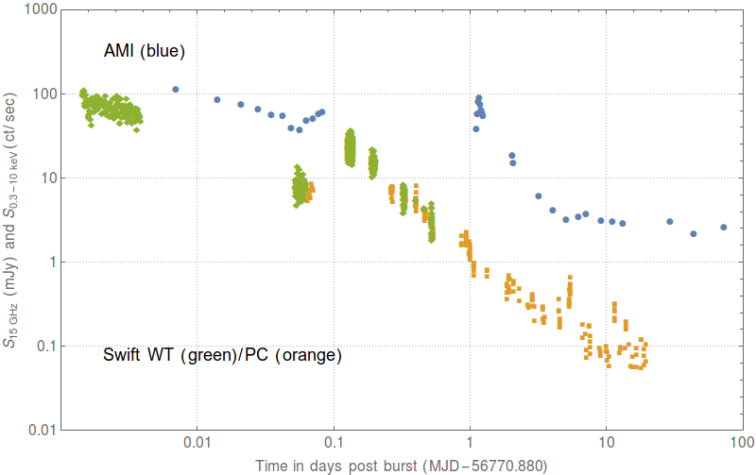4PiSky Authors: Rob Fender / Gemma Anderson / Tim Staley
ADS Link: http://adsabs.harvard.edu/abs/2014arXiv1410.1545F
On April 23, 2014, the Swift satellite detected a gamma-ray superflare from the nearby star system DG CVn. This system comprises a M-dwarf binary with extreme properties: it is very young and at least one of the components is a very rapid rotator. The gamma-ray superflare is one of only a handful detected by Swift in a decade. As part of our AMI-LA Rapid Response Mode, ALARRM, we automatically slewed to this target, were taking data at 15 GHz within six minutes of the burst, and detected a bright (~100 mJy) radio flare. This is the earliest detection of bright, prompt, radio emission from a high energy transient ever made with a radio telescope, and is possibly the most luminous incoherent radio flare ever observed from a red dwarf star.

X-ray (Swift) and 15 GHz radio (AMI, operating in the ALARRM programme) observations of a superoutburst from the the extreme flare star DG CVn. Radio emission was strongly detected already only six minutes after detection of the initial burst by Swift. This demonstrates both the feasibility and scientific potential of very rapid response modes for radio telescopes.
